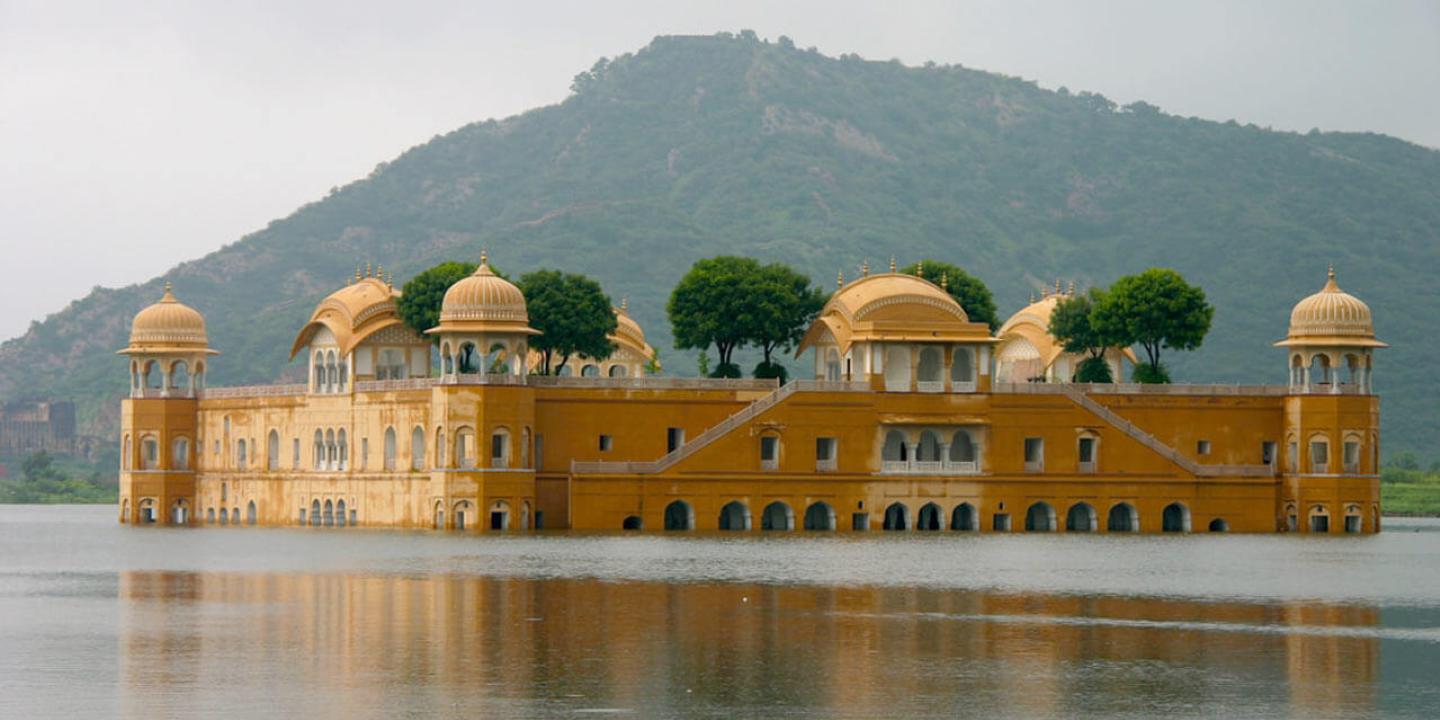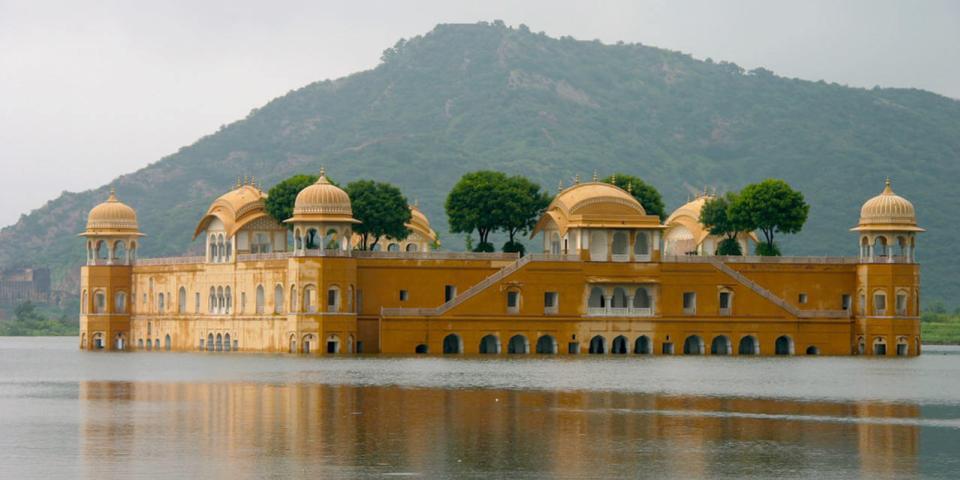The Jal Mahal, a mesmerizing architectural wonder in the heart of Jaipur, Rajasthan, is an iconic landmark that attracts tourists and history enthusiasts from across the globe. Known as the “Water Palace,” this historical marvel, nestled amidst the serene waters of Man Sagar Lake, is a testament to Rajasthan’s rich cultural heritage and architectural brilliance.
A Historical Perspective on Jal Mahal
The Jal Mahal was built in the 18th century by Maharaja Madho Singh I as a hunting lodge. Contrary to its grandeur, the palace was never intended as a royal residence. It served as a tranquil retreat for the king and his entourage during their duck hunting expeditions.
The architectural >Rajput and Mughal influences, making it a masterpiece of its time. Over the years, the palace has undergone several renovations, preserving its timeless allure while adapting to modern sensibilities.
Architectural Splendor of Jal Mahal
An Engineering Marvel
The Jal Mahal appears to float gracefully on the waters of Man Sagar Lake, an illusion created by its unique design. While the palace has five stories, only the top floor remains visible above water, with the lower levels submerged, adding to its mystique.
Intricate Design Details
- Exquisite Carvings: The walls of the palace are adorned with intricate carvings and motifs, showcasing the craftsmanship of Rajasthani artisans.
- Jharokhas and Chhatris: The palace features traditional Rajasthani elements like jharokhas (balconies) and chhatris (dome-shaped pavilions), enhancing its aesthetic appeal.
- Red Sandstone: The use of red sandstone adds to its regal charm, contrasting beautifully with the blue waters of the lake.
Man Sagar Lake: The Perfect Backdrop
The Lake’s Significance
The Man Sagar Lake is an artificial reservoir constructed in the 16th century by Raja Man Singh I. The lake not only serves as the picturesque setting for the Jal Mahal but also plays a vital role in the region’s ecology.
Flora and Fauna
The lake is home to diverse species of flora and fauna, including migratory birds like flamingos, pelicans, and herons, making it a haven for bird watchers and nature enthusiasts.
Jal Mahal and Its Restoration Efforts
Over time, the Jal Mahal and its surrounding lake suffered from neglect and pollution. However, significant restoration efforts in the late 20th century revitalized its charm. These efforts included:
- Cleaning and rejuvenating Man Sagar Lake.
- Restoring the palace's structural integrity and aesthetic elements.
- Creating eco-friendly tourism opportunities around the site.
Today, the Jal Mahal stands as a symbol of sustainable conservation and heritage tourism.
Things to Do Around Jal Mahal
Boat Rides
Visitors can enjoy boat rides on the tranquil waters of Man Sagar Lake, providing a closer view of the palace and an unforgettable experience.
Photography
The ethereal beauty of Jal Mahal, especially at sunrise and sunset, makes it a paradise for photographers. The palace’s reflection in the lake during these golden hours is nothing short of magical.
Shopping at Nearby Markets
The area around Jal Mahal is dotted with vibrant markets offering:
- Traditional Rajasthani handicrafts.
- Jewelry and textiles.
- Local delicacies like kachoris and ghewar.
How to Reach Jal Mahal
By Air
The nearest airport is the Jaipur International Airport, located approximately 25 km from Jal Mahal. From the airport, you can hire a cab or take public transportation to reach the site.
By Train
The Jaipur Railway Station is well-connected to major cities across India. From the station, Jal Mahal is just 10 km away, making it easily accessible by road.
By Road
Jaipur has excellent road connectivity with neighboring cities. You can reach Jal Mahal via private vehicle, taxi, or even public buses.
Best Time to Visit Jal Mahal
The ideal time to visit Jal Mahal is during the winter months (October to March) when the weather is pleasant. Avoid visiting during the peak summer months as the scorching heat of Rajasthan can be overwhelming.
Jal Mahal: A Timeless Wonder
The Jal Mahal is not just a historical monument; it is a symbol of Rajasthan’s grandeur, culture, and architectural ingenuity. Whether you are a history enthusiast, a nature lover, or simply seeking tranquility, the Jal Mahal promises an experience like no other. Its serene setting, combined with its rich history, ensures it remains a jewel in Jaipur’s crown.




